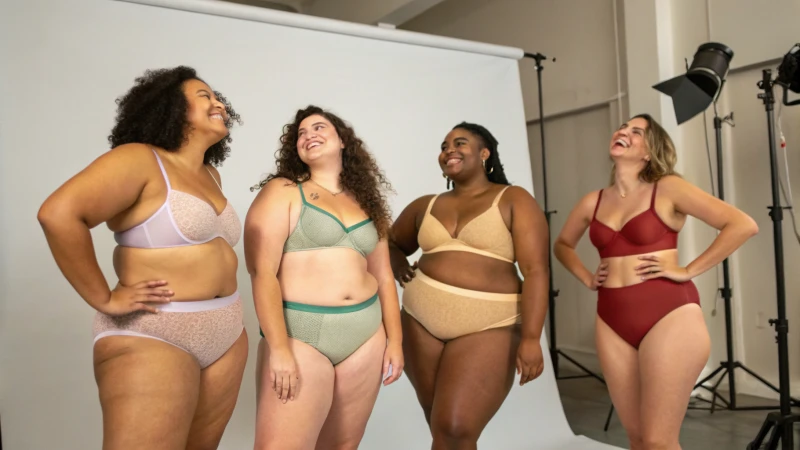
Sensitive skin needs gentle care, similar to a soft hug. This is especially important when selecting underwear.
Organic cotton, bamboo, modal, silk and merino wool are the best materials for sensitive skin. These fabrics are very gentle. They do not cause allergies easily. They allow air to flow through. They help keep the skin dry by moving moisture away. This reduces irritation. They offer really soft comfort.
I remember feeling upset after my skin felt sore from wearing some underwear. This pushed me to search for materials that didn't just suggest comfort but actually provided it. I discovered organic cotton. Its breathability was like fresh air on a hot day. Bamboo came next, with its natural ability to fight bacteria. It kept everything dry and free from irritation. Modal became my soft, luxurious choice for days when I wanted something very light on my skin.
Silk traditionally seems like an expensive choice. However, it glides over the skin, reducing friction and makes me feel pampered. Merino wool was a material I initially ignored. Its temperature-regulating properties keep me warm or cool, depending on my needs. Understanding these unique benefits changed my approach to buying underwear for sensitive skin. Every fabric brings its own special feeling. Each choice really adds to overall comfort and well-being.
Organic cotton is hypoallergenic.True
Organic cotton is free from chemicals, reducing allergic reactions.
Silk is not breathable for sensitive skin.False
Silk is naturally breathable and helps regulate body temperature.
Why is Organic Cotton Best for Sensitive Skin?
Organic cotton is popular with people who have sensitive skin. This material causes less irritation. It's more than a trend. It brings real comfort.
Organic cotton suits sensitive skin because it is hypoallergenic, chemical-free and breathable. This fabric minimizes irritation. It also reduces allergic reactions. Organic cotton provides comfort. This material is very gentle on the skin.

The Hypoallergenic Nature of Organic Cotton
I remember my first time with organic cotton. Back then, my skin reacted to everything, from detergents to synthetic clothes. A friend told me to try organic cotton. I felt unsure but needed help, so I tried it. The change was amazing. Without the strong chemicals of regular cotton, organic cotton felt gentle on my skin. It doesn’t have synthetic pesticides or fertilizers, which lowers the chance of irritants causing redness and itchiness.
| Property | Organic Cotton | Conventional Cotton |
|---|---|---|
| Chemical Treatments | None | Pesticides, synthetic dyes |
| Skin Irritation Risk | Low | High |
Breathability and Moisture Management
Breathability is another great feature of organic cotton. Imagine a hot summer day and wearing something that feels like plastic—that was me before I wore organic cotton. Its natural fibers let air move freely, keeping me cool and dry in high humidity. This really helps people with eczema.
Knowing about eczema-friendly fabrics1 is helpful for keeping skin happy and healthy.
The Absence of Harsh Chemicals
I didn't know so many harsh chemicals hide in clothes until I looked closer. Chemicals like formaldehyde and flame retardants are bad, especially if your skin is sensitive. Choosing organic cotton allowed me to avoid these harmful elements.
My clothes now feel as gentle to my skin as they are kind to the earth. The impact of chemical-free clothing2 on sensitive skin is significant. Once you feel this change, returning to old habits is unlikely.
Eco-Friendly and Ethical Considerations
I find comfort in knowing my choices help sustainable farming. Organic cotton benefits us and our planet by supporting fair labor and reducing pollution.
If you wonder how fashion choices influence the world, learning about sustainable fashion practices3 is a great start.
Learning about these aspects of organic cotton surprised me—it isn't just about choosing fabric; it’s about adopting a lifestyle that respects our bodies and the earth.
Organic cotton is hypoallergenic.True
Organic cotton lacks chemicals, reducing allergy risks.
Conventional cotton has no skin irritation risk.False
Conventional cotton often contains irritants causing reactions.
What Makes Bamboo Fabric Ideal for Sensitive Skin?
Imagine wrapping yourself in a cloud of comfort. Bamboo fabric provides great relief for those with sensitive skin.
Bamboo fabric is a wonderful option for sensitive skin. It has natural hypoallergenic qualities. The material feels silky and soft. Bamboo fabric very effectively pulls moisture away from the skin. Antibacterial properties offer even more protection. People with skin irritation really benefit from this soothing fabric.
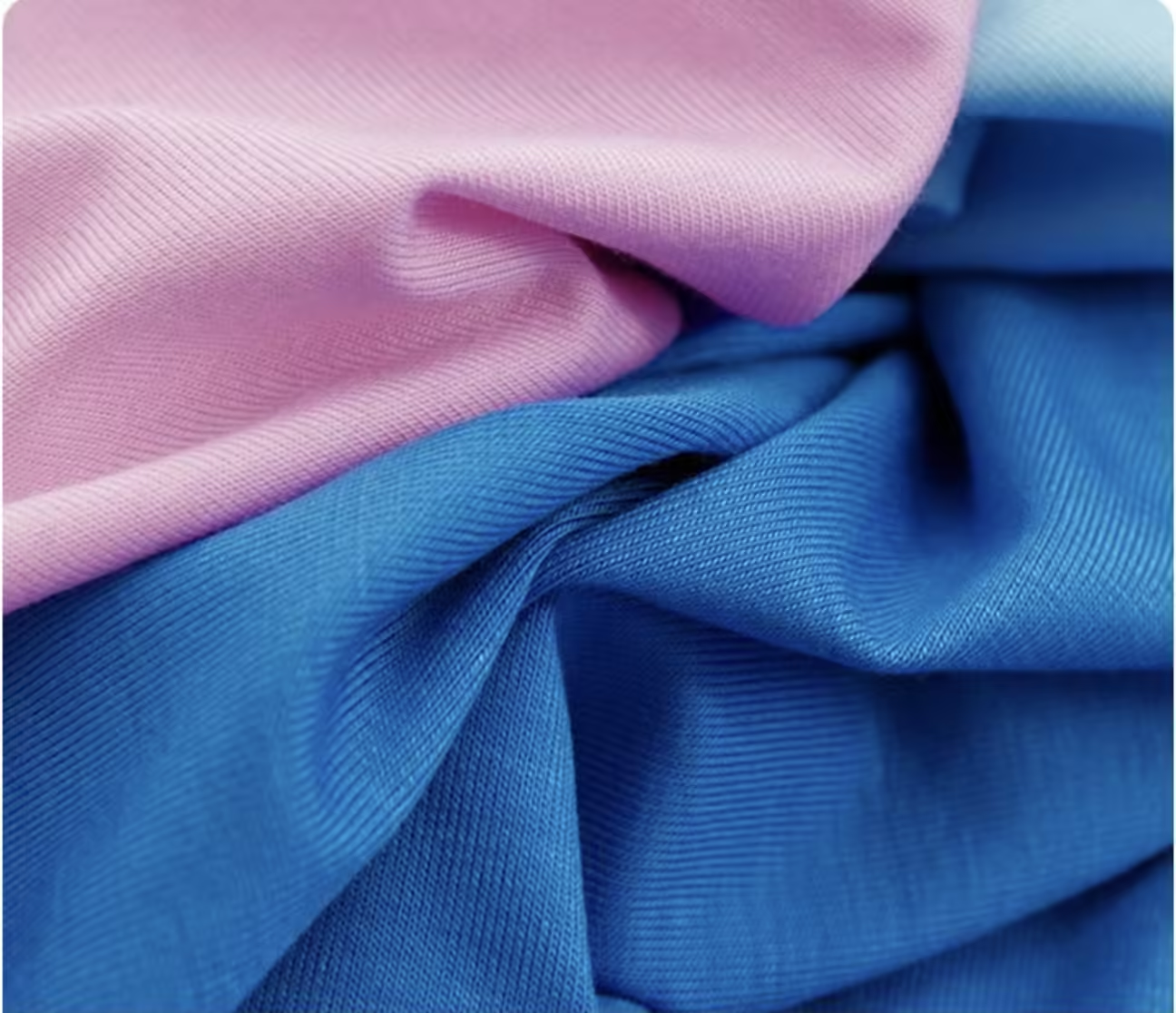
Understanding Bamboo Fabric's Natural Properties
Do clothes ever irritate your skin? Mine definitely did. Even soft cotton once felt rough like sandpaper on my eczema-prone skin. Then, I found bamboo fabric. This material comes from the pulp of bamboo plants and is a natural blessing for sensitive skin. Its hypoallergenic nature4 means it probably causes less irritation. I felt great relief from the itching.
The Softness Factor
Imagine wearing something as soft as cashmere or silk, without spending too much. That's how bamboo fabric feels. When I put on a bamboo shirt for the first time, it felt like a gentle hug. It greatly reduced the friction on my sensitive skin, which is very important for anyone with eczema or similar problems. The fibers are smooth and round5, feeling gentle unlike fabrics that seem to attack comfort.
Antibacterial Benefits
With sensitive skin, bacteria is a serious concern. Bamboo fabric stands out here as it carries an antimicrobial agent known as "bamboo kun," which stays even after processing. I experienced fewer flare-ups and felt less irritation, offering a hygienic solution for those prone to allergies or infections.
Moisture-Wicking Abilities
Moisture on sensitive skin is unwelcome. Bamboo fabric manages moisture well and wicks sweat away, keeping you really dry and comfortable. I used to skip workouts fearing a rash; now, bamboo fabric eliminates that worry with its quick-drying feature providing comfort without compromise.
| Feature | Benefits to Sensitive Skin |
|---|---|
| Hypoallergenic | Reduces risk of irritation |
| Softness | Minimizes friction |
| Antibacterial | Lowers bacteria growth |
| Moisture-Wicking | Keeps skin dry and cool |
Environmental Impact
Bamboo fabric also matches my values for sustainability. Growing up, I learned to live in harmony with nature, and bamboo fits this idea perfectly since it grows fast and needs no pesticides or fertilizers—making it an eco-friendly choice for planet lovers like myself who seek comfort and eco-consciousness6 in one package.
Learning about these features helps pick fabrics for sensitive skin by providing comfort without giving up health or style. When clothes feel like the enemy, discovering bamboo fabric is like finding peace.
Bamboo fabric is hypoallergenic.True
Bamboo fabric's hypoallergenic nature makes it less likely to irritate sensitive skin.
Bamboo fabric requires pesticides to grow.False
Bamboo grows rapidly without the need for pesticides or fertilizers, making it eco-friendly.
Is Modal a Good Choice for Comfort and Sensitivity?
Recall when you put on a fabric that was as soft as a cloud on your skin? Modal feels really like that. This fabric suits people with sensitive skin very well. Let’s find out why modal might be the fabric you love.
Modal is a wonderful option for comfort. The fabric feels very soft. It breathes well. Its hypoallergenic quality suits people with sensitive skin. Modal is an excellent pick for those with skin concerns.

Understanding Modal Fabric Properties
I touched modal fabric for the first time. It felt like a soft, smooth stream of water. Modal, crafted from beech tree pulp, is incredibly soft and breathable7. Cotton sometimes feels heavy, but modal remains lightweight and silky. It's perfect for warm climates.
Comparing Modal to Other Fabrics
When examining fabrics for my sensitive skin, modal stood out.
| Fabric | Softness | Breathability | Hypoallergenic |
|---|---|---|---|
| Modal | High | High | Yes |
| Organic Cotton | Moderate | High | Yes |
| Bamboo | Moderate | High | Yes |
Why Modal Works for Sensitive Skin
Sensitive skin like mine needs care. Modal offers smoothness that reduces friction. It gently glides over the skin. Its moisture-wicking ability prevents irritation, especially on sweaty summer days. It's truly helpful and an ideal option8 for those prone to skin issues.
The Environmental Perspective
Beyond comfort, I care about the planet. That's why I appreciate modal. It's more sustainable than many synthetic fabrics. Its production requires less water and fewer chemicals, aligning well with eco-friendly values. Brands like Xiwei Undies9 focus on using modal to deliver high-quality, planet-conscious products.
Customer Insights on Modal
I've listened to fashion enthusiasts who love modal's luxurious feel and durability. Even if you're an emerging brand or an experienced one, modal satisfies high-quality standards while remaining gentle on sensitive skin. It is versatile and caters to diverse needs—consider it if you're seeking to innovate your wardrobe while meeting sensitive skin requirements10.
Modal fabric is hypoallergenic.True
Modal's smooth texture and moisture-wicking properties reduce skin irritation.
Modal uses more water than cotton in production.False
Modal production requires less water compared to traditional cotton.
Why Is Silk Recommended for Delicate Skin?
My skin sometimes behaves like a grumpy child. On those days, silk becomes my soothing friend. Ever wonder why silk and sensitive skin are a perfect pair? Let’s explore the wonders of silk!
Silk is good for delicate skin because it rarely causes allergies. The texture feels silky and smooth. It keeps moisture in the skin. These qualities help reduce irritation. It supports healthy skin. It is perfect for people with sensitivity problems.
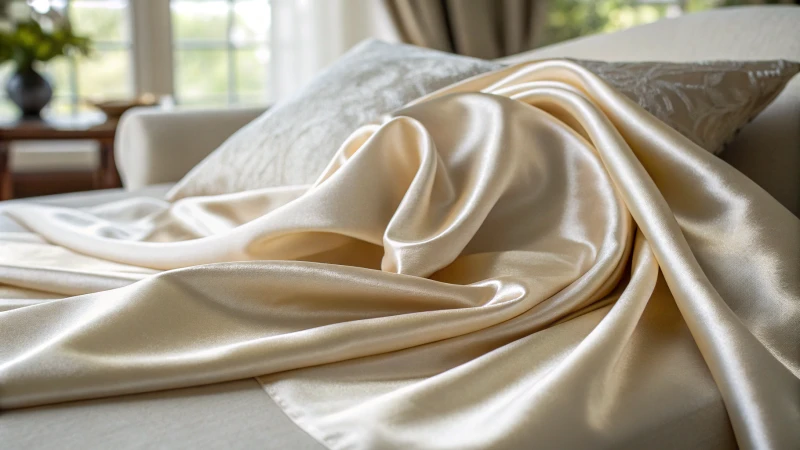
Hypoallergenic Nature of Silk
I remember my first experience with silk pillowcases - it really changed things! Silk, a natural protein fiber, rarely causes allergies unlike synthetic materials. If you have allergies or sensitive skin, silk is probably your best choice.
Smooth Texture
Silk's incredibly smooth texture has transformed my life. It slides softly over the skin, cutting down on friction and lowering irritation. This is very helpful for dealing with skin issues like eczema or dermatitis. Less friction means happier skin.
| Feature | Silk | Cotton | Synthetic |
|---|---|---|---|
| Texture | Ultra-smooth | Coarse | Varies |
| Hypoallergenic | Yes | Sometimes | Rarely |
| Moisture Retention | High | Medium | Low |
Moisture Retention
Silk's skill in retaining moisture is very important for keeping my skin hydrated. It helps maintain the skin barrier, stopping dryness and flakiness that trouble sensitive skin.
Comparison with Other Fabrics
Although organic cotton11 is hypoallergenic and breathable too, silk wins for smoothness and moisture retention. Bamboo fabric may have antibacterial qualities, but it lacks silk's luxurious feel.
So, adding silk pillowcases or clothing to your wardrobe can really improve skincare and comfort. Trust me, after trying silk, there's no going back!
Silk is less likely to cause allergic reactions.True
Silk is hypoallergenic, unlike many synthetic fabrics.
Silk retains less moisture than cotton.False
Silk retains more moisture than cotton, aiding skin hydration.
How Does Merino Wool Support Skin Health?
Did you ever think your clothes might do more than simply help you look nice? Merino wool truly might change everything for your skin health, too.
Merino wool helps skin health. It controls temperature very well. The wool absorbs moisture effectively. Plus, it is hypoallergenic, so it rarely causes allergies. Its soft fibers lower friction. They also prevent irritation. People with sensitive skin, like eczema sufferers, find it suitable.

Temperature Regulation
I remember my first time wearing a Merino wool sweater. It felt like a gentle hug wrapped around me. That day was very cold, yet I didn't feel the chill. This amazing material helps control temperature like it has its own mind. It keeps you warm when needed and cool when it's hot. You’re never too hot or too cold, which is soothing for those with sensitive skin. Sudden temperature changes can irritate some skin types, making Merino wool an ideal choice for temperature regulation12.
Moisture Management
There's something really comforting about trustworthy clothing. Merino wool's ability to manage moisture feels like having an assistant for your skin. It pulls sweat away and allows moisture to evaporate, keeping your skin dry and happy even after a long day. I’ve always feared rashes and fungal infections from dampness, but with Merino wool, these concerns are minimized thanks to its moisture management13.
| Benefit | Description |
|---|---|
| Temperature Control | Keeps skin comfortably warm or cool as needed |
| Moisture Wicking | Draws sweat away, reducing skin irritation |
| Hypoallergenic | Rarely triggers allergic reactions |
Hypoallergenic Qualities
Growing up with eczema, finding non-irritating materials was a lifelong quest. That's why Merino wool's hypoallergenic nature thrilled me. Unlike rougher wools that itch, Merino fibers are finer and softer, offering a comforting alternative that doesn’t bother my skin. For those with sensitive conditions like eczema, it provides relief compared to other materials14.
Reducing Friction and Irritation
Merino wool acts as a peacekeeper for fabric by reducing friction against the skin, which helps avoid chafing in sensitive areas like underarms or thighs. Whether running errands or going to the gym, Merino wool clothing moves with me, enhancing comfort and stopping irritation during any activity.
Merino wool regulates body temperature effectively.True
Merino wool adjusts to body temperature, keeping you warm or cool.
Merino wool fibers are coarser than traditional wool.False
Merino fibers are finer and softer, reducing itchiness and discomfort.
How Can I Best Care for Underwear Suited for Sensitive Skin?
My skin is very sensitive, so underwear needs special attention. I would like to share how my underwear stays soft and without irritation.
Maintaining underwear for sensitive skin needs attention. I pick gentle fabrics like organic cotton and bamboo. These materials soothe the skin. Washing requires mild detergents. I avoid fabric softeners completely. Air drying keeps them irritation-free. This method really helps.
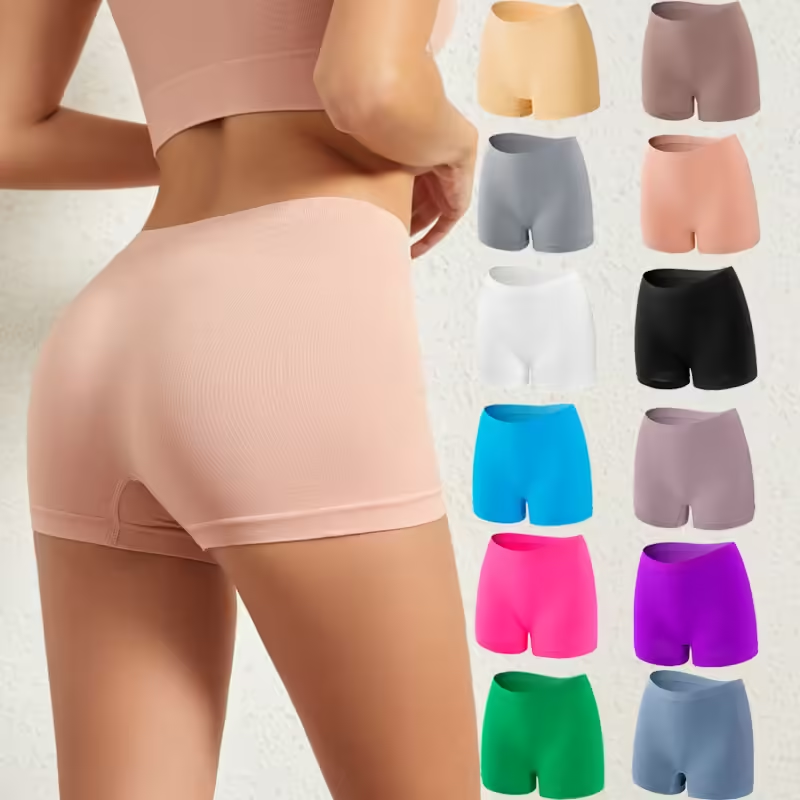
Choosing the Right Fabrics
Selecting underwear using the right materials was my first step to comfort. Organic cotton became my favorite due to its hypoallergenic and breathable properties. It feels like a gentle hug around my hips. Bamboo has really been a game changer with its antibacterial and moisture-wicking characteristics.
| Fabric Type | Benefits |
|---|---|
| Organic Cotton | Breathable, reduces irritation |
| Bamboo | Antibacterial, moisture-wicking |
Each material offers special benefits. For instance, organic cotton15 is ideal for everyday use as it provides comfort and allows air to pass through.
Washing Techniques
I quickly learned that washing underwear properly truly matters. I stick to mild detergents and avoid using harsh chemicals or strong fragrances that might upset my skin. Fabric softeners are not on my list as they often leave residues that cause irritation.
- Hand Wash: Wash gently by hand in cool water.
- Machine Wash: If using a washing machine, select a delicate cycle with cold water.
- Detergent: Prefer hypoallergenic or baby-safe detergents.
Look at hypoallergenic detergent options16 to find the best products for sensitive skin.
Drying Methods
Air drying became my underwear's closest friend since using a dryer feels risky; heat could damage the fabric and might leave residues that irritate my skin.
- Air Dry: Hang or lay flat in a shaded place.
- Avoid Sunlight: Direct sunlight can weaken fabrics and fade colors.
Discover more tips17 on good drying methods to maintain your underwear.
Storage Tips
Proper storage helps keep my underwear nice by folding them neatly in a dry area which retains freshness and avoids dust that could cause irritation.
- Fold Neatly: Fold them neatly and keep in a clean, dry area.
- Avoid Plastic Bags: Use breathable fabric bags to stop moisture build-up.
Find out about best storage solutions18 to protect your garments over time.
By choosing the right fabrics and using these care tips, I keep my underwear cozy and friendly to my sensitive skin.
Organic cotton underwear is hypoallergenic.True
Organic cotton is naturally hypoallergenic, reducing skin irritation.
Fabric softeners are recommended for sensitive skin underwear.False
Fabric softeners can leave residues that irritate sensitive skin.
What Are Common Misconceptions About Underwear Fabrics?
I remember the first time I put on bamboo underwear. I thought it was an eco-friendly paradise. But I knew very little!
Mistakes about underwear materials are common. Not every cotton type is airy. Bamboo fabric might not always be good for the environment. Synthetic materials do not always cause irritation. Silk is not only for fancy events. These wrong ideas probably affect comfort and sustainability choices. Important note꞉ wrong ideas affect choices.
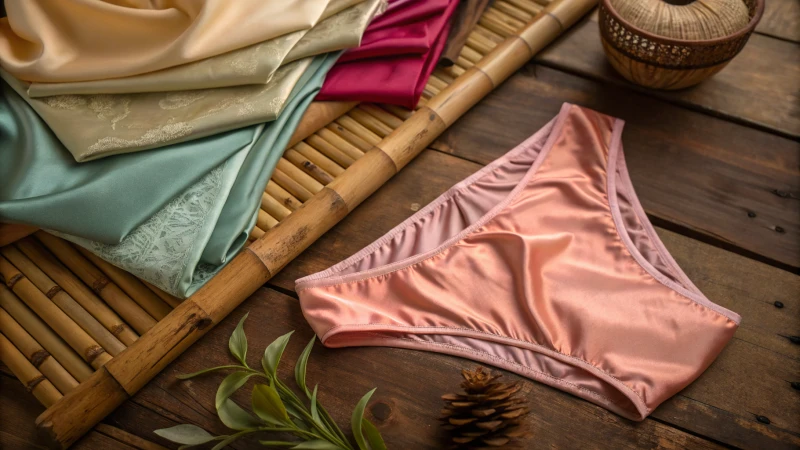
Myth 1: All Cotton Fabrics Are Breathable
I once purchased cotton underwear, believing they'd be ideal for summer. I was really wrong! Not every cotton type breathes well. Heavy cotton blends trap moisture, leading to discomfort. It's essential to check the fabric's weight and weave19 before choosing.
Myth 2: Bamboo Fabrics Are Eco-Friendly by Default
Bamboo's green reputation caught my interest until I learned about the harsh chemicals used in some processes. This information was really surprising. Now, I search for organically processed bamboo20 to match my sustainability values.
Myth 3: Synthetic Fabrics Always Cause Irritation
For a long time, I avoided synthetics like polyester because I thought they irritated skin. But modern synthetics have improved significantly. They wick moisture away, feeling surprisingly comfortable. Brands often use blends to balance strength and comfort21.
Myth 4: Silk Is Impractical for Everyday Use
Silk seemed like a luxury for special days until I wore a silk blend daily. Its natural fibers control temperature and cut down friction, providing unexpected comfort. Explore everyday silk blends22 for practical use.
| Fabric Type | Common Belief | Reality |
|---|---|---|
| Cotton | Always breathable | Varies with type and weight |
| Bamboo | Environmentally friendly | Depends on processing methods |
| Synthetic | Causes irritation | Modern blends can be comfortable |
| Silk | Only for special occasions | Suitable for everyday wear |
Myth 5: Wool Fabrics Are Itchy and Uncomfortable
As a child, wool meant itchy sweaters, but merino wool changed my view. It's soft, keeps moisture away, and fits even sensitive skin. Discovering merino wool options23 led to newfound comfort.
These insights helped me select underwear better suited to my lifestyle. Every fabric has special traits for different needs; it's crucial to explore and pick wisely.
All cotton fabrics are breathable.False
Cotton's breathability varies with fabric type and weight.
Bamboo fabrics are eco-friendly by default.False
The eco-friendliness of bamboo depends on processing methods.
Conclusion
Explore the best underwear materials for sensitive skin, including organic cotton, bamboo, modal, silk, and merino wool. Each fabric offers unique benefits for comfort and irritation reduction.
This link explores fabrics beneficial for eczema sufferers, providing insights into materials that soothe sensitive skin. ↩
Discover how avoiding harsh chemicals in clothing can improve comfort and reduce skin reactions. ↩
Explore how sustainable fashion choices contribute to environmental health and ethical labor standards. ↩
Learn about the hypoallergenic properties of bamboo fabric and how they benefit sensitive skin. ↩
Discover the processes that ensure bamboo fabric's smoothness, enhancing comfort for sensitive skin. ↩
Explore the sustainability aspect of bamboo fabrics and their eco-friendly production methods. ↩
Learn more about how modal's breathability contributes to its comfort for everyday wear. ↩
Discover why modal is considered beneficial for sensitive skin types. ↩
Understand the environmental benefits of choosing modal over other fabrics. ↩
See real customer feedback on wearing modal products. ↩
Explore why organic cotton is a popular choice for sensitive skin and how it compares to silk. ↩
Explore how Merino wool's temperature-regulating properties benefit individuals with sensitive skin conditions. ↩
Discover how Merino wool effectively wicks moisture away from the skin, enhancing comfort and reducing irritation. ↩
Learn why Merino wool is less likely to cause allergic reactions compared to other fabrics, benefiting sensitive skin. ↩
Organic cotton is hypoallergenic and breathable, making it ideal for sensitive skin. ↩
Hypoallergenic detergents are free from harsh chemicals, reducing skin irritation risk. ↩
Air drying preserves fabric quality by avoiding high heat exposure. ↩
Proper storage ensures fabric integrity and prevents moisture build-up. ↩
Explore the differences in breathability among various cotton fabrics to make informed choices. ↩
Learn about the eco-friendly processes involved in manufacturing bamboo fabric. ↩
Discover how modern synthetic blends provide both comfort and durability. ↩
Understand the benefits of using silk fabrics for everyday wear. ↩
Find out why merino wool is a comfortable choice for underwear. ↩



